
Periods with purpose
Turning free time into acts of service
‘25
DHRUV NALLAMOTHU
Managing Editor, Online
Service is one of the fundamental pillars of Greenhills culture. From integrating more service into classes like FRESH to creating a new pathway system, which allows students to focus on specialized areas. This year is no different. The service department has added many new opportunities and changed old systems to adapt to make sure students are giving back in the most meaningful ways possible.
In her 13 years as the Head of Service Alyssa Friendly works to ensure Greenhills is doing its job giving back to the community. Friendly is dedicated to creating a culture of service for students that instills a sense of giving back that lasts long after they graduate. “My main goal is trying to find ways for kids to give back,” Friendly said. “There’s all this evidence that shows if you start volunteering at a young age, you’re going to continue throughout your life. When they start young, kids often realize how easy it is to wrap service into their lives and grow their passion.”
New this year is an update to service hour requirements. In previous years, students could fulfill service requirements in school through many different volunteering opportunities such as Gryphon Ambassadors or peer tutoring.
munity, but the purpose of the requirements was to get kids ways to interact with the greater community.”
With the change in requirements, Friendly and the SLICE team have found a way to make sure students don’t have problems finding opportunities. Last year, Friendly re ceived feedback from students that they want ed volunteer opportuni ties during free periods, and she delivered.
“It kind of just came up last year,” Friend said. “Looking back at it I don’t know why we haven’t done this all along.

CUTTING DOWN, BUILDING UP Aarav Vashishta ‘26 and Nandan Narayanan ‘26 help to cut down invasive species in the local area. “It was so fun to do it, especially with friends,” said Narayan ‘26. “We were cutting down invasive species, but it just felt like hanging out with friends.”
“It had been 10 years since we sat down with a group of students and created the service hour requirements,” Friendly said. “I wanted to revisit them because I wanted to make sure they were still relevant. When I looked into them, I realized that there are a lot of opportunities for kids to get involved within the school. Of course, I want kids to continue to stay active in our com-

The students been asking about if we could do ser vice during out a way. Using lunch, the last class of the day, and C and C time, we get a really big chunk of time.”
Logistically, this hasn’t been easy to organize. Friendly credits the success of the program to the Student Leaders in Civic Engagement (SLICE).
“It’s been a huge undertaking,” Friendly said. “And I have to give all the props to the SLICE kids because they are the ones reaching out. SLICE officers are each in a pathway and each pathway has set up all the excursions. They have been the ones emailing organizations and communicating with them constantly over the summer. It’s completely student-run.”
However, while complicated to organize, there are short-term and long-term benefits to this new program. Friendly hopes that when kids utilize these occasions, they can build that sense of service in themselves.
“Logistically it’s going to help a lot of our kids get their service hours done,” Friendly said. “Since they are all off campus, all these outings are counted for the requirement. Another benefit is that since it is all local, we’re building relationships with these organizations so that
Middle school welcomes new head
LAUREN YE ‘26
School Staff
Walking into the familiar halls of Greenhills, one rounds the green carpeted landscape of the all-school forum, and in the glass office off the northwest corner of the space a new face greets students. There, Mayra Diaz, the new head of middle school, works to improve her division and its learning environment by engaging students and changing the framework of their day-to-day life.
Diaz comes from Georgetown Day School in Washington, D.C, where she worked for 23 years before her new role in the middle school. She says this experience was one that contributed to her coming to the school.
“I had a really wonderful mentor who had an approach to teaching that was about teachers supporting one another in the interest of elevating students’ work,” Diaz said. “To me, that style of leadership and teaching was motivating and drew me toward Greenhills.” Throughout the first few weeks of school, Diaz has been working on settling into her new role and finding a balance between her different responsibilities.
“Part of what I love about this job is that you are in a sense a jack of all trades, you are on the ground if you need to be, if you need to cover a class or a C&C,” Diaz said. “In my role, there are also a lot of meetings, whether it’s with parents, students, or faculty.”
Part of Diaz’s approach to being an administrator is doing hands-on work with students to foster a better understanding of their needs and challenges to ultimately create a more supportive learning environment.
“I also have the room to visit classes, so I’ve been doing a lot of classroom visits just to get to know the students, and what they’re learning,” Diaz said. “Mrs. [Bridget] Maldona-
do and I were talking about shadowing a student to get a sense of what it’s like to be a middle school student at Greenhills.”
Maldonado, in her role as the Middle School Dean of Students, is one of the many people that works closely with Diaz. As they have settled into the new school year, the first few weeks have been focused on finding their footing and a system that works for the middle school.
“It’s been really great having her as a partner,” Maldonado said. “The work that we do is largely around the structure and focus of the middle school. We’re looking at the middle school experience academically, socially, and through their extracurriculars and athletics.”
One of their big projects has been reworking the C&C time at the end of the day. They have been working on making it a useful time for both students and teachers and while it’s still a work in progress, they have already made big changes to the C&C structure.
“Students now fill out a weekly survey to choose where they want to spend their C&C time.” Diaz said.
“It gives them more variety and independence. They are able to self guide themselves in their decisions and allows them to learn how to manage their time.”
Diaz has also infused her personality into her work, bringing a new layer of creativity and excitement to every project she takes on.
“We have the middle school party coming up,” Maldonado said. “Ms. Diaz is very into themes and decorations, so she’s really taking on the decorating and theme part of the middle school party.”
Diaz says that some of the most
kids who want to volunteer outside of
school have an easier time finding organizations to work with.”
Service Lead
Amanda Chen
‘24 has high hopes for the new program. She is most excited about the King Elementary School oppor-
“I think it’s be really useful for underclassmen,” Chen said. “Freshmen and Sophomores who can’t drive can really take advantage of this opportunity. I think it will really help incentivize kids since a lot of the time, we don’t know what to do during our free periods.”
SLICE member Etienne Rouillard ‘25 shares a similar feeling about the new program. He guides students through the steps to get involved and sign up.
“It’s really simple,” Rouillard said. “All you have to do is sign up on the pathways doc, which you can find on Gryphon or in your email. After that, all you have to do is sign a couple of permission slips and show up during lunch at the designated meeting spot, and you’ll all walk together.”
The importance of giving back to the community is widely acknowledged, with an emphasis on how such activities can promote values such as compassion, responsibility, and awareness.
“Just do it,” Friendly said. “If you’re on the fence, just do it. There is truly nothing better than that feeling of giving back, and I can’t wait to see all the amazing things we accomplish this year.”
enjoyable parts of her job are when she is able to be with students and interact with them.
“Sometimes I cover lunch duty,” Diaz said. “It has been great teaching middle school students to have a routine at the end of lunch and taking care of the space and taking care of the community. It’s establishing a sense of community and respect.”
In the time she has been at the school, Diaz has made a personal impact on the students. Her values of community and respect are shown through her interactions with the middle school students.
“I’ve talked to her a few times.” Roshan Malani ‘29 said. “She’s nice, she’s kind, and she cares about the students. She wants it to be a safe and caring community for everybody.” Diaz is focused on ensuring the happiness and prosperity of the middle schoolers through all aspects of their life.
“She is working to improve the middle school experience and make sure that each middle schooler is thriving at Greenhills,” Maldonado said.
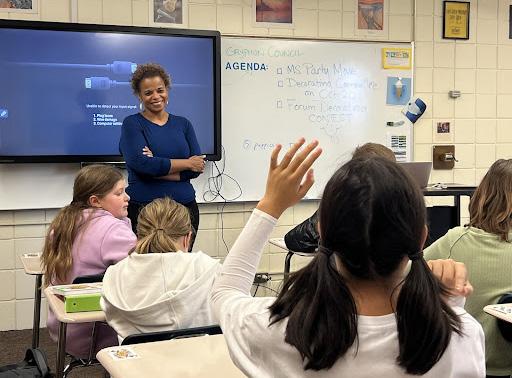
Marking periods end, semesters remain
Goal to reduce student stress
ARYA PRAHBAKER ‘26 School Staff
Greenhills has decided to move away from the traditional format of marking periods to a semester based system beginning this school year. Most students have only known marking periods while at Greenhills. With a new change in the academic system, the school hopes to decrease students’ stress levels.
Deano Smith, worked previously as the dean of academics. Both the faculty and their respective departments have worked over the past years to address the schools grading and policies to ensure students learn to their best abilities.
“Our goal is to make sure students learn as in depth as possible and to make sure that their experience in our school is enjoyable,” Smith said. “One of the main concerns of faculty members were that students were feeling locked in. The first marking period is normally spent helping students to adapt to their new environment and by the time it ends you only have a couple of assignments leaving no room for improvement.”
For years teachers have always said that marking period grades are just check in grades students should not feel paranoid, yet the anxiety levels are still high. Alexandra Dasilva ‘26 shares her feelings on the shift to semesters.
“In the beginning of last year I had a lot of trouble adjusting to classes and how teachers graded,” Dasilva said. “Immediately after the first couple weeks we would have a marking period report and it was such a stressful time for me.”
With marking periods gone, Dasiliva feels as if she has more freedom to learn.
“Now I have time to adapt to school properly without receiving a grade set in paper,” Dasilva said. “This allows me to not feel as stressed on grades as the school year starts and more focused on how to learn.”
Adjusting to school is difficult for everyone. School Counselor Heidi Butz anticipates a change in the overall well being of students during this transition.
“Students’ wellbeing was absolutely considered and we support these changes primarily because with this new system there is a longer runway for improvement and academic growth,” Butz said.
With a new system in place, the school hopes to reduce the stress students feel and make adjusting to classes an easier process.
“We hope the worry that students have about the implications of each individual assessment will be reduced,” Butz said.
Without marking periods the school hopes students will develop a new mindset of improvement and make adjusting to classes an easier process.
“Previously, marking periods resulted in students having a fixed mindset. They were more likely to give up if they were not getting the grade they wished for,” Butz said. “This longer period of time fosters more of a growth mindset for learning and improving.”
While some students believe this change is for the best, others disagree.
“The problem with having no marking periods is that some teachers don’t update grades in Gryphon,” Manya Tijoriwala ‘26 said. “If some teachers aren’t updating grades, I won’t be able to see where I am in the class.”
While students will no longer have report cards for their grades, they will still receive feedback from teachers.
“Although grades will not be available, we believe it is still important for students to receive feedback from their teachers through comments and parent teacher conferences,” Smith said. “This way students will understand there is always a next step and a chance to improve.”
The removal of marking periods allows teachers to expand on topics and not rush through them.
“One of the unique things about Greenhills is that teachers teach to their subject area and to their passions,” Smith said. “With semesters teachers have more flexibility to teach differently and by removing that artificial barrier of marking period one, and giving the full semesters students and teachers we allow for a better way of learning.”
PARTY PLANNING Mayra Diaz leads a middle school Gryphon Council meeting for the middle school party. “My favorite part of the day is when I get to interact with students,” Diaz said.
Graphic by Megan Peng ‘25
Photo courtesy of Alyssa Friendly
Photo by Lauren Ye ‘26
Volume 24, Issue 1
Tuesday, October 31, 2023 The Student Newspaper
of Greenhills School

If you build it
will
Greenhills has been without a staple of the normal high school experience for the entirety of its 56 year history; a football team. The argument as for why is confusing, as it seems to be a combination of different things like the cost of the sport, lack of student interest, or even not having enough students to field a team. Despite this, there are many other schools in similar situations to Greenhills who are able to field football teams, and successful teams at that.
The editorial board wanted to make sure we had a spread of data by looking at schools that are bigger, smaller, more expensive, less expensive, and in different cities, to look at the demographics that “prevent” us from having a football team.
Football is a very expensive sport. Yes, getting a football team started would cost a lot of money, however, according to CNBC and Daily Journal, high school football is a massive money maker for schools. The Daily Journal breaks down that it costs roughly $900 per player, roughly equalling $25,000 for equipment, a one time cost. Big numbers, high numbers, and “too much money” is what a lot of people would say. However, the average team rakes in around $3,000 to $15,000 per home game from ticket sales and concessions. Meaning that a school would make back the money in 2-9 games which is very affordable. According to CNBC, most high school football teams can sustain themselves after a year or two simply from money intake at home games, meaning Greenhills would not have to spend tens of thousands of dollars per year on the team.

72 students fewer than Greenhills and have nearly half the tuition cost. They have had a football team for decades, making it to 15 state championships and winning 12 times, an MHSAA record. We could do the same if we do the right things regarding student interest and population.

football will play, and more will come. Jackson Lumen Christi and University Liggett both have teams with smaller student populations and have teams because they advertise football. Greenhills could join them in football if the athletic department advertises plans for a team before adding one in order to draw football players to the school.

If football were suddenly offered here at the beginning of the school year, it is clear that a football team would just not work. There are no football players at Greenhills, and not enough interest to form a team. In the future, though, this is a possibility. The athletic department just needs to draw players to the school, so by saying that we will have a team at some point and getting the word out to prospective students, people interested in playing football will see Greenhills on the map. Once enough players fill the halls, a team could finally be fielded, and football could have a place here.
An example of this is Jackson Lumen Christi, as they have
 THOMAS STOFFEL ‘25
THOMAS STOFFEL ‘25
Student interest is one of the biggest reasons behind not having a football team. This is actually a lot more simple than it might seem. Why would we have students who are interested in football come here to a school that doesn’t offer football? Many people say that even if we tried to field a team, not enough people from the current population would be interested. This, we argue, completely misses the point. According to a poll of upper school students, a major 45 percent of the student body said they would want or would participate on a football team if Greenhills offered one. If we begin offering football, people who are interested in
The donkey and the gryphon
Greenhills’ political uniformity and how to diversify it
Growing up in Ann Arbor, I was always really introduced to the typical political ideals of a college town, that being all views very liberal. So liberal to the point where from 6th grade to 9th grade I considered myself a communist. In the summer of 8th grade I went to a Climate Change summit in Boston with people from many different backgrounds with lecturers from around the country, outside of my bubble. The political discourse and dif ferences of opinion allowed me to really ideas that I supported challenged in a way I had never really thought about in the Ann Arbor liberal bubble. This caused me to really think about what I personally believe in and I believe changed me for the better. To me, worry that without the political dis course that represents a true microcosm of the United States, the energy of the political echo chamber of Greenhills, with the same ideas being bounced off each other, could end in radicalism fairly quickly.
It’s no secret that Greenhills is liberal-minded school. It’s in a college town and Greenhills’of fers classes like Health, in the 9th grade, which talks about sexuality as well as safe sex practices. In today’s post Roe v. Wade world, teaching about these things in school is very controversial in places, often the outcome of choosing to teach or not teach the subjects puts you firmly on the side of liberal or conservative. Greenhills’ decision to allow discussion of these topics could paint it in a more liberal light.
that endorses all political views, the overall political atmosphere of Greenhills is very one sided and uniform. As a result of this, History and English classes, where politics are more likely to come up, generally start to sound like liberal viewpoint discussion sections, alienating some students who maybe have more conservative views.

While Greenhills does a generally good job of making the school a politically open space with programs like Politics Club

THOMAS STOFFEL ‘25
Political discourse and disagreement is a good thing to challenge your ideas or strengthen your own by looking at it from a different perspective and this just does not happen in classes like these. To fix this I aim for more diversity in Greenhills. Not diversity in the traditional sense but diversity as in hiring more teachers from diverse backgrounds across the country and introducing students to ideas in other parts of the country, liberal or conservative. For example, a teacher from Florida while teaching a class like American Literature while discussing a book on activism, might share how activism looks different where they grew up in contrast to in the Ann Arbor bubble. In this approach, no person is alienated and students get to see two sides of the same coin.
Again, Ann Arbor is a very liberal city fostering a student atmosphere closely aligned with progressiveism. To diversify our student body, the admissions office could increase enrollment efforts outside of the main Ann Arbor area, reaching out to more politically diverse regions around Ann Arbor for enrollment.
Humanities vs. STEM
The future is impossible to predict, which would be a good reason for being hesitant to take action around a football team. The schools in our area that field teams, thought, are proof of a process that works, and one that could work for Greenhills. They all support football teams even though they make less money from tuition and have less students. If anyone wants a good look at how a football team could fit here, just look at all of the schools who are nearly the same as Greenhills and see the success that they have had.
Marcus Aurelius, the famous Roman emperor, once said, “Cast off your sense of injury and the injury itself disappears.” Like Aurelius, we must cast off our pride and hear out other sides and different perspectives to become more politically informed.


The worrying inequalities between the humanities and STEM at Greenhills
To make a society, we must know “how” we work, that being STEM, but we also must know “why” we work that being the humanities. At Greenhills, it seems more emphasis is placed the “why” than the “how. This is the handicap of Greenhills, people wanting to do more humanities are forced to look at other options looking at dual enrollment to take AP European history or taking AP World History online which we know from the Pandemic can be horrendous. Myself and many others have these grievances and hardships but STEM kids have no such grievances, any class they could want to take Greenhills offers.
The math department has more than double the employees as the history department as well as half the APs available and for people like me aiming for a humanities field, this is a major setback for courses I want to take.
When I decided to go into a humanities field after high school, I wanted to take advanced classes to cater to my interests such as AP World History, AP European History, and AP
Comparitive Government. Going in, I assumed greenhills would have at least one of these due to the fact that the STEM department has advanced whole year classes for each math level and science level. The only thing that comes close to that level of choice in the Humanities department was APUSH and Advanced Gov which is only 1 semester.
And while I understand the reasoning for having more representation in STEM fields due to the increased opportunity, school is supposed to take a student’s interest and foster it so they can follow their interests, having little advanced classes in a certain subject can really hinder that fascination and make career choices in that field a lot harder.
I believe that increased faculty for the humanities to teach more advanced humanities classes would greatly benefit and foster the Greenhills community. Not only would students have greater opportunities for classes in the humanities to foster their interests, it would also create way more mentors and advisors for kids who want to go into the humanities.
With Greenhills having such a high emphasis on community, there is a sense of each individual departments feel like you personally are apart of them when you take an advanced class due to the amazing teachers here and small class sizes. The problem with this though is like I said earlier, there are more teachers in certain departments than others, creating a more through, supported, and fleshed out community rather than one humanities teacher teaching 5 classes.The best parts of these departments is you build a personal relationships with teachers and you grow inspired and its simply harder to do that with limited humanities and arts.
In this day and age where much of our lives are determined by government and history, it is imperative that as much emphasis is placed on the arts and humanities as STEM. It’s important to know where we came from and how to look at things from different angles, find different angles, not just mathematically. As the old saying goes,“Those who do not know history are doomed to repeat it”.

PAGE 2 OCT. 31, 2023 Alcove is a newspaper written by students, for the students of Greenhills School. All opinions, views, and statements reflect those of the students working on Alcove and not necessarily the faculty and staff of Greenhills. Alcove is written to inform, encourage, and expand upon the curiosity of the students that Greenhills strives to cultivate. Providing a forum for students to express their individuality, the Alcove reminds you to always read the pine print. Editor-in-Chief Anjan Singer ‘24 Managing Editor, Print Eva Bernstein ‘25 Managing Editor, Online Dhruv Nallamothu ‘25 Art and Design Editor Megan Peng ‘25 School Editor Izzy Baru ‘25 School Staff Mira Jayaraman ‘26 School Staff Arya Prabhakar ‘26 School Staff Lauren Ye ‘26 Opinion Editor Thomas Stoffel ‘25 Lifestyles Editor Bella Young ‘24 Lifestyles Staff Ella Song ‘25 Lifestyles Staff Aoife Tang ‘26 Lifestyles Staff Natalie Hong ‘27 Sports Editor Dom Schuster’24 Sports Staff Matthew Streicher ‘24 Sports Staff Megan Peng ‘25 Sports Staff Neha Narayanan ‘26 Advisor John Lund
Courtesy of En-Lih Wang ‘24
they
come Fielding a football team would be easier than most might think

“Who’s that?”: New faculty join school community

What’s your favorite hobby?
“I really like to write, specifically fiction. I recently published a second story in Cricket Magazine called Wings. My first story was called The Kind of Girl Donuts Talk To.”
If you were a character in a movie, what actor or actress would you want to play your role and why?
“I’ve actually thought about this question before. I would want Ally Sheedy, from the Breakfast Club, to play me, even though she’s older than me. ”
What’s your favorite place that you’ve traveled to?
“Mexico City is one of my favorite places that I’ve traveled to because it has everything: restaurants, art, interesting people, street art, street food, and axolotls.”

What’s an interesting place you’ve been to?
“I studied abroad in Nepal, and I spent five months there in 2019, and I learned Nepalese, lived with a family in a rural village. For the first few weeks, I could only say vegetable in Nepalese. I walked an hour to school every day, planted rice, harvested potatoes and corn, things like that. We hiked up into the Annapurna Himalayan Range and climbed a couple of mountains. That was my time abroad in Nepal.”
Do you have any crazy stories?
“I did two trips up Mount Kilimanjaro, and I distinctively remember on the first trip, I had given up a lot of my water. So we started climbing. As we’re climbing, I start to get really tired. We get close to the top, and I was super tired, I had given away my gloves to a student, and they start handing out coffee. So I deliberately poured scalding hot coffee on my hands to keep me awake and to keep my hands warm. And that was just part of my climb up Mount Kilimanjaro.”

What’s the difference between coaching college vs. coaching high school?
“There are a couple of main differences in terms of operations. But the biggest thing that I had to adjust to is the ways I communicate with both the players and the parents. The college-level players are responsible in different ways for their own schedule and getting into practice, whereas a lot of the players here are relying on either other players to give them rides or parents to pick them up or drop them off. So definitely adjusting to that communication of different parties involved. Also in high school, you’re more inherent to the players that are here, whereas in college, you’re actively recruiting players to come fit my program. Outside of that, my approach to coaching is pretty similar.”
What’s a favorite place you’ve traveled to?
“I’ve been abroad to a few places. I studied abroad in college, and so my favorite was when I went to India. It was totally different from anything I’ve experienced. Before I was a math and biology major as an undergrad, so when I went to study abroad in India, it was a history of math course, and it was really cool to see the old mathematics. I studied at the University of Delhi. For a culturally immersive experience, that was probably the coolest trip I’ve ever taken.”

What is a fun fact about you?
“I played college basketball. I played two years at Kent State University and two years at Glenville State College. I also coached basketball at Salem University. Now, I coach varsity girls basketball here.”
What’s a favorite place that you’ve traveled to?
My favorite place that I’ve traveled to would have to be Costa Rica. I went with my family a few years ago. They just have really good food, and all of the people are really nice. It’s a beautiful place.”

What do you think is the biggest difference between teaching in America and teaching in China?
“The academic rigor is much more intense in China. Students are taking classes, studying in the evening, they’re going to cram schools over the weekend, and it’s very much focused on those standardized outcomes. In the U.S., we focus on the whole student, at least at Greenhills, so that was a big difference.”
If you had unlimited money, what would you put in your classroom?
“I would put really nice leather couches for all of the students with beautifully crafted mahogany lapboards and velveteen cushions underneath for students to put their things on, instead of tables and plastic chairs.”

Brady Washington History & Social Sciences
What is an interesting hobby you have?
“My dad and I are in the process of restoring a 1983 Mustang that we’ve been working on for quite some time together, he’s got a pretty cool setup in his garage. Over the winter, we’re supposed to put all the suspension on and things like that, so that’s something I do. A lot of my uncles and my dad’s friends all worked in the auto industry and they were all very handy, so when I was growing up, my dad always taught me how to do things to the car myself, and it was something I always really enjoyed.”
What’s a memorable job you had?

What’s a fun fact about you?
“I actually just retired from the same high school that Mr. Madden graduated from. So he graduated in 2016, and I was working there as a teacher. I did not have Mr. Madden as a student though. It was a big public school. But it’s just a funny coincidence how we came from the exact same place, and now we’re both new teachers here.”
If you could travel to any era in history, where would you go?
“Probably the roaring twenties. I feel like that was a fun time to be alive. There was so much going on, and people were having a good time. Big cities were evolving and industrialization was coming about. Like New York City was really exciting. I think it would be fun to be in Manhattan, in a road house in the roaring twenties.”

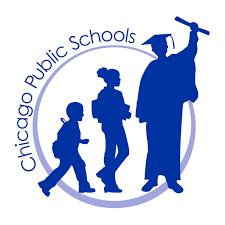
Jacqueline Wisor History & Social Sciences
What are some of your favorite hobbies?
“I like running, I ran cross country and track in high school and ran a couple of marathons in college and have kind of kept it up from there. Cooking, I do it all the time, it’s very relaxing, I make homemade bread, I make everyone I know a cake for their birthday. ”
What is your favorite place you’ve been to and why?
“After I graduated high school, I didn’t want to go to college, so I worked in construction. I tore my labral in my shoulder while snowboarding, and by the time I got surgery, I no longer had my construction job. So my dad got me a job at the steel mill where he worked, and I worked midnight shifts for an entire year. And that was the most miserable thing I had ever experienced, it was hot, it was disgusting, and I hated it. After that, I was like, I’m gonna go to college.”
“If I had a million dollars…” In a hypothetical world where money is no object, StuCo grade representatives dream big
NATALIE HONG ‘27
Lifestyles Staff
Back in September when grade representatives were elected, they were all required to make a speech regarding what they would contribute to the school and what their visions were. But, if they were to revise their ideas given new parameters: no boundaries and unlimited money, their goals might change.
Keating Holland ‘27, a ninth-grade representative, said he would love to see MacBooks provided for all students and an overall expansion of the school, preferably doubling the grade sizes. He would definitely like to expand the parking lot, which would make space for quicker drop-off and pick-up lines, as well as eliminate the morning rush of upperclassmen racing for a good parking spot. Larger lockers and cubbies would be on Holland’s agenda, as well as solar panels to improve the school’s energy efficiency. As for the PlumSmart lunches, Holland has an upgrade in mind.
Although maybe not the healthiest, a dessert option would surely be an upgrade enjoyed by many students.
Jonah Kaplan ‘26, a sophomore repre sentative also has a few improvements in mind.
“I would definitely expand the sports department to help with student involvement in a sport, make the student section big ger, and help with practice facili ties,” Kaplan said. He would also like to make Spirit Week a bigger event, including taking some activities off campus. Also off-campus, Kaplan thinks that holding dances at venues would be much prefer able to continuing to hold them at the school. Kaplan also thinks that students would appreciate a bigger food selection at dances. Regarding assemblies and grade meetings, Kaplan has some ideas.

“I know it sounds bad, but I’d like to have dessert for lunch. I think that there’s definitely enough money to do that,” Holland said.
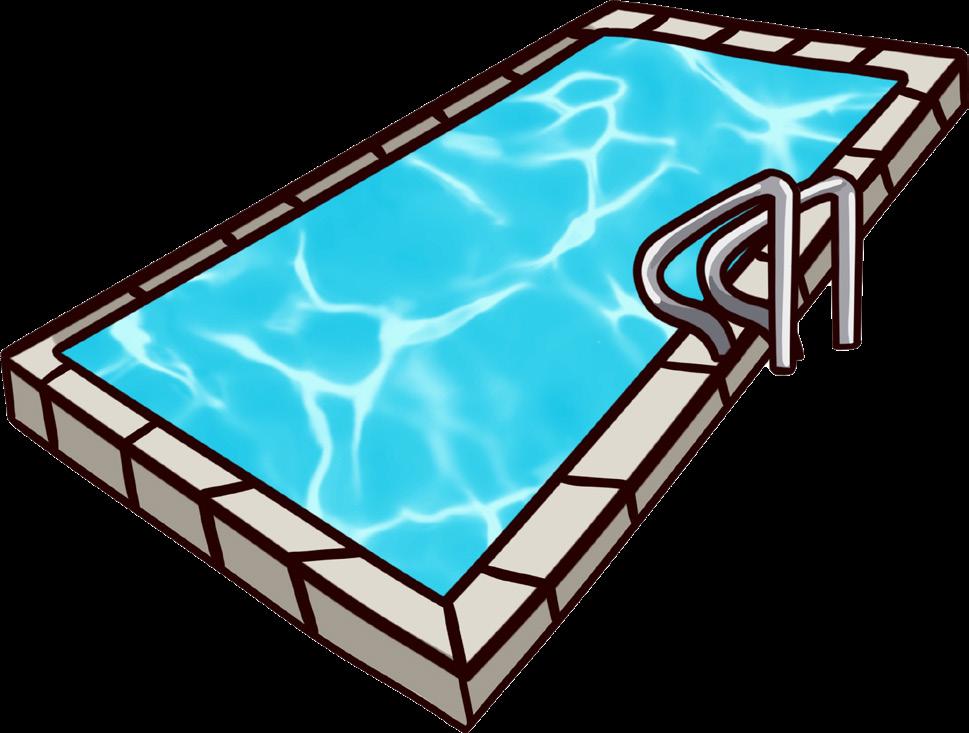
“I think assemblies I could make more fun if we had some funding to like I said, go off campus or have different games during assemblies and grade meetings,” Kaplan said.
Sara Raoufi ‘25, a junior grade representative has a lot of improvements to the school on her list.
“If money was not an issue, I think my top priority would be to fix the roof that they are always working on and to stop the leaking, a bigger theater that eryone can sit in, an indoor pool, a parking garage, and more art studios,” said Raofi.
She thinks that another good improvement to the school would be more single-stall bathrooms. As a lover of books, Raoufi thinks that a futuristic update to the library would be a good idea.
“I want a digital library like when you walk in and there’s an iPad, but there would be multiple and then you find a book on it, and a section lights up,” Raoufi said. Lastly, a school vending machine would 100 percent make the cut if it was up to her.
Amanda Chen ‘24, a senior grade representative has similar upgrades in mind. Like both Holland and Raoufi, Chen says she would “first make the parking lots bigger.” Similar to Kaplan, she thinks that both Spirit Week and
“My favorite place is Germany because I used to be bilingual. I went there when I was 16 and stayed with a host family and then I went back and studied abroad in college. It was the first place I went where I could immerse myself in the culture because I spoke the language and I’m still in touch with my host family there, and it’s just a beautiful country.”
sports game attendance could use some help.
“I would help buy decorations for spirit week because I feel like a lot of people go out and buy their own decorations for spirit week and then it’s like why are we having people spend money decorating the forums,” Chen said. Buying fan section merch to get people out to

sports games more was her plan of how to up student attendance. Lastly, Chen thinks that a t-shirt gun is an essential upgrade to the school.
“A t-shirt gun would be so cool and definitely get fans out to sports games. I don’t know about you,
but I’d be cool with free Greenhills merch.” OCT 31, 2023 PAGE 3
Greg Hafer English
Taylor Parker Athletics
Dylan Madden History & Social Sciences
Jill Dixon Athletics & Wellness
Amy Bokser English
Jim Kuhn Math
Graphics by Megan Peng ‘25
Briefs compiled by Lauren Ye ‘26, Aoife Tang ‘26

Halloween movies return Students, teachers recall favorite spooky films

Violet Weizer ‘25 - Hereditary
“I first watched this movie in July at summer camp in the middle of the night, between 12 and 3 a.m., which adds to the effect. It’s very spiritually focused, which freaks me out. I never used to be scared of ghosts or spirits before, but now when I’m walking at night, this is the movie I think about.”
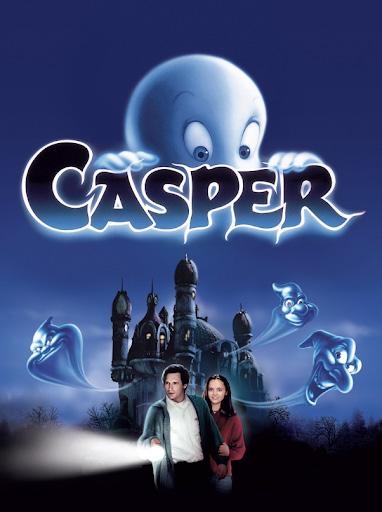

Navya Ashok ‘24 - Coraline
“I used to watch Coraline as a kid, I watched Coraline for the first time with 2 of my friends and I remember us getting really freaked out and we couldn’t sleep that night. So this movie brings back all the memories and nostalgia.”

English Teacher Greg Hafer - Dracula
“When I was very little my dad took me to see Bram Stoker’s Dracula and instead of scaring me for life, it made me want to watch more horror movies and read more horror literature, and become an English teacher. would love to teach a Gothic Literature Horror senior seminar.”
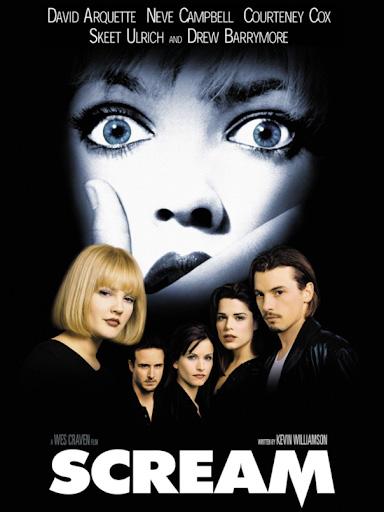
Henry Beck ‘26 - Scream
“Scream has been such a big part of my childhood, I’ve watched it countless times. I tremble and I quake when I watch these kinds of horror movies because it’s really scary. But it’s good because I love horror movies.”
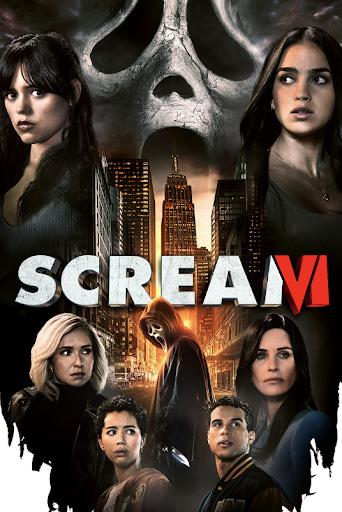
Mickey Drozdowski ‘27 - Scream VI “All the Scream movies have a reoccuring trope of don’t trust everyone you meet online and also that anyone can be a killer. I was moved by it because they broke the sexism trope and made a both guy and a girl a killer which basically no horror movies do.”
Where the wild things are Burns Park, Ann Arbor Hills, Main Street among popular trick-or-treating spots
Lifestyles Editor
With Halloween here, adults and kids alike are on the hunt for the ultimate trick-or-treating spots. Finding which neighborhoods have the biggest candy bars and the best decorations takes experience, and some people have just the right intel.
By far the most popular spot amongst students to trick-or-treat, Burns Park, has a storybook charm during Halloween. The neighborhood’s well-kept gardens and welcoming porches make it a prime spot for people seeking a friendly and enticing experience.
Isaac Hess ‘24, a long-time resident of this area, claims there is no better place to trick-or-treat.
decorations scaring us is so fun. I never know what to expect each year, and that’s the best part.”
Adjacent to Burns Park is Ann Arbor Hills, another coveted location for trick-or-treaters. The houses are more spread apart, but neighbors come together to create a warm and inviting environ-
nesses and stores on the street give out candy during the day. Manuel Garcia ‘27 has younger siblings he likes to take to this event.
“My siblings get scared of Halloween decorations at night, so this street allows them to get the trick-or-treating experience without getting frightened by scary ghosts,” Garcia said. “It is also safer for them during the day because if they run off at night, it would be difficult to find them.

“The energy of the neighborhood is so nostalgic,” Hess said. “I have a lot of friends who live near this area, so it is always easy to hang out with them during Halloween. All the houses give so much candy that our bags would overflow with king-sized candy bars well before it was dark.”
Granger Avenue, a street in Burns Park, has an exceptionally high Halloween spirit. Intricate decorations line the streets; ghosts, pumpkins, and skeletons pile on lawns, each house more extravagant than the last.
“I’ve been to many neighborhoods to trick-or-treat, but nothing beats Burns Park,” Camille Clem ‘27 said.
“Granger Avenue is specifically my favorite street during Halloween because the decorations are so wild. When it’s dark and eerie, screaming and running around with my friends with spooky
Students craft Halloween costumes
ARYA PRABHAKAR ‘26 School Staff
With Halloween here, students are ready to show off their crafty and spooky sides. While storebought costumes are always an option, some students choose to embrace their creativity and make their own costumes. Jump into the world of do-it-yourself (DIY) costumes, where imagination knows no bounds, and the possibilities are as limitless as your creativity. Discover how DIY costumes not only save money but also offer a one of a kind way to express personality and stand out from the crowd.
Ruth Norton ‘25 created her own costume last year. She had decided to be Nancy Morgan Hart, a historical figure who was a spy and pioneer. Norton created her costume using materials found in her house and craft stores.

ed up with an all green lizard outfit with glow and dark hot glue on the front that said ‘mean green lizard but not scary’.”
This year, however, Norton will be taking her imagination to a new level by combining some of her interests.
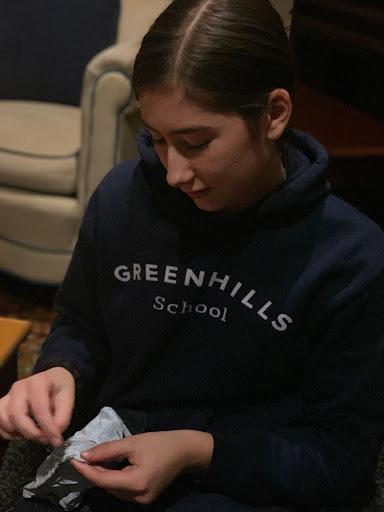
“I looked at the clothes I already had and picked out an outfit from that, but it was missing the skirt I had in mind,” Norton said. “I decided to create one from scratch so I went to Joann’s where I found a plain brown fabric.”
sews her new Halloween costume, “I mainly create my costumes using fabric,” Norton said. “But there are other forms of DIY. It’s a chance to use your creativity and imagination to create something of your own making.”
Every year Norton picks out a math themed costume and now it has become a tradition. She always finds a way to let her costume express herself.
“I’ve been doing DIY since I was very little, it’s always been a hobby of mine. I enjoy learning how to sew and use new crafting skills,” Norton said. “Halloween is sort of the only time of year I get to do it, and it’s nice. I feel like it’s a chance to incorporate my own interests such as math, and the idea of zero waste.”
Though Norton has been making costumes for years, her favorite costume was when she was around four years old.
“I wanted to be a lizard,” Norton said. “I end-
“This year I’m going be a mathematician Barbie,” Norton said. “There has not been a mathematician Barbie made, so by incorporating my interest in math I will be able to create a new version of Barbie as my costume.
Vic Cunningham ‘24 recently started creating DIY costumes, this year she added a twist to her individual costume.
ally big pink boots since pink is my favorite color and with Blossom’s I wore a really cute skirt with Mary Janes to show my style.”
While designing your own costume can be fun, there are challenges that come along with this process.
“When I started DIY costumes, I faced some challenges,” Cunningham said. “Since I had never done DIY costumes before, I would have an idea but wasn’t sure if I was capable of bringing it to life”.
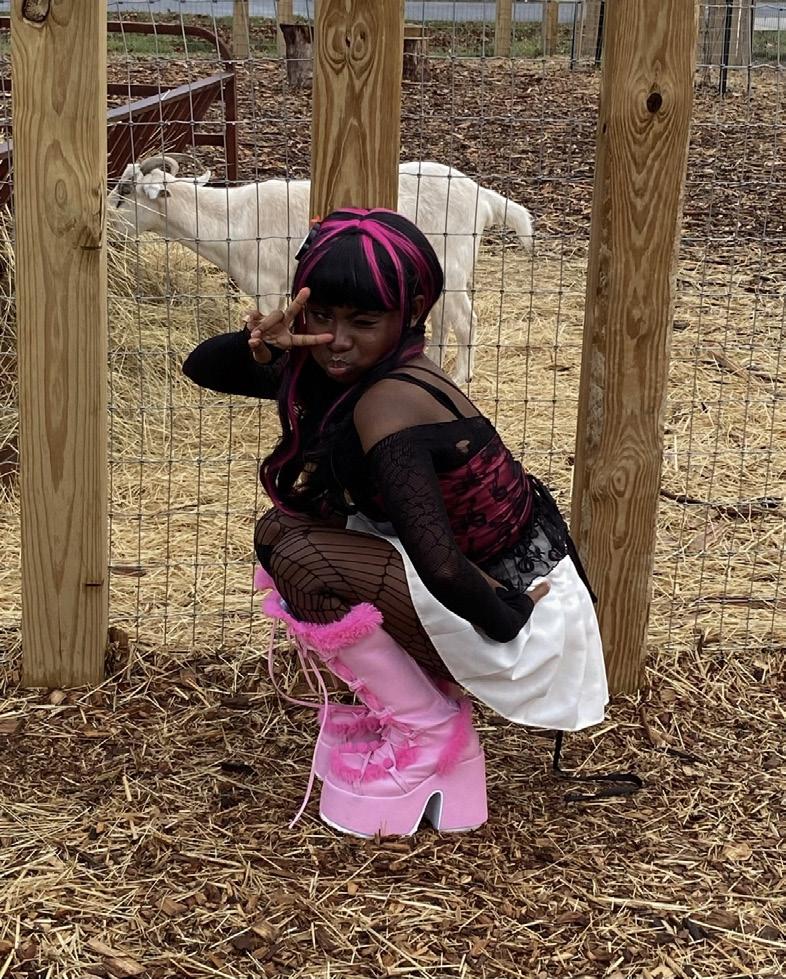
Students don’t only use their DIY costumes for Halloween. Amanee Singh ‘24 does DIY costumes not only for her personal experience but also for her business.
“During Halloween I get a lot of sales by making things like fruit hats that people can use for costumes. I crochet all my costumes, and it only takes a couple of hours to learn,” Singh said. “Using DIY I can cater the costume to my interests and save money. This can be really fun to learn on days where you have nothing to do and it is quite easy to learn.”
Deeksha Sriram ‘26 created costumes in the past and plans to return to DIY when she has the time.
FROM FABRIC TO A WORK OF ART Vic Cunningham
‘24 shows off her DIY Dracula costume from last year. “I feel less pressure from going out to buy a costume because that can be very expensive,” Cunningham said.
“Last year I made my own Dracula costume and the year before that I was Orange Blossom, a Strawberry Shortcake character,” Cunningham said. “This year, however, it all depends on what my sixth-grade buddy wants to do since we are going to make costumes together.”
“I can just make what I want at home, with no limitations so I can be anything once know how to make it.”
Each year Cunningham likes to alter the costume from a traditional style to make it more unique.
“All my costumes have my own style to them,” Cunningham said. “With Draculaura I wore re-
“I enjoyed creating my costumes, after seeing DIY costumes last year I feel like it would be fun to create one again because of my interests,” Sriram said. “I’ve always loved arts and crafts and when was younger I really wanted to be an architeque. Even though that’s not my goal anymore, I still really enjoy graphic design, fashion and other forms of visual art. I think the best idea is to just go for it and to be yourself because costumes are a form of self expression by making something that represents you and your personality.”
Sour Patch, Twix voted students’ favorite Halloween candies

Trunk-to-trunk trick-or-treating
ELLA SONG ‘25 Lifestyles Staff
I highly recommend Main Street to teachers with young children or students with young siblings.”
In another part of town, the Old West Side neighborhood is a treasure trove for trick-or-treaters. The beautifully preserved historic homes and tree-lined streets offer a picturesque backdrop for an enchanting Halloween experience.
“The decorations for the houses are always so elaborate,” Mia Melendez ‘25 said.
ment. Adults mingle on driveways while their kids cut through backyards to get as much candy as possible.
“This neighborhood has the nicest families and prettiest autumn trees, creating a lively and dreamy place to trick-or-treat,” Ava Englesbe ‘24 said.
“One of my favorite moments during Halloween in this area was when a few neighbors gathered together on a driveway to hand out apple cider and donuts to trick-or-treaters. It is so nice to see the friendliness of families here during the spooky holiday.”
Unlike a neighborhood, Main Street in downtown has a daytime trickor-treating event. This is perfect for families with younger children because busi-
“When you put giant spider webs and skeletons on the front lawn of ancient houses, it adds to the spooky atmosphere. It is also really close to Washtenaw Dairy, so my friends and I always get Halloween donuts after getting candy.”
Many people choose to stay in their own neighborhoods to trick-ortreat. Staying local and going across the street to a neighbor’s door for treats can create a stronger sense of community.
“I love trick-or-treating in my neighborhood because everything is familiar. know the streets and the people here, so it’s comforting,” Englesbe said.
“Trick-or-treating is an activity where you bond with people; sometimes, the best place to do that is right where you feel you should belong.”
As the leaves start to fall, the temperature starts to drop, and the days shorten, communities start to welcome back a long-awaited tradition: Trunk-orTreating. This event is known differently to each person. Some people know it as Halloween tailgating, Car-to-Candy, and more.
“It’s a bunch of cars in a parking lot, and they all have a theme,” said Madeline Baker ‘27.“They give out candy from their trunks to the kids that walk around. It’s really fun, especially when you get to do it with friends, and it’s really cool to see each car’s theme.”
Trunk-or-treating is fun when it’s just a bonding experience for you and your friends, but some people substitute trick-or-treating for trunk-or-treating completely, for numerous reasons.
“The first, and maybe only time that I took my kids trunk or treating, was because the school that they were going to was directly across the street,” said Design teacher Tim Wilson. “We were in a big city, so we were able to go to the school and walk around the parking lot. It was just so much safer than walking around the neighborhoods because we just don’t know the areas very well, it might not be safe, and it just would have made it more difficult.”
Sometimes, your location makes it feel unsafe to go trick or treating, like in Wilson’s case. But for some, it’s not just the danger of the location.
“In my neighborhood last year, we did trunk or treating because all the houses were really far apart, so everyone lined up their cars, and the kids would go from car to car,” Leah Stephany ‘26 said.
“I live in the middle of the woods, so it was just harder for the kids to walk around and get to each house. I handed out candy to the kids, and enjoyed trunk or
treating because you got to interact with the kids more because they were in your trunks. I think our neighborhood bonded more from this experience.”
For Stephany and many others, trunk-or-treating is a way to connect to your peers in a creative, collaborative, and commu- nity-bonding way. But

for oth - ers, it might not capture the same feeling that good old-fash-


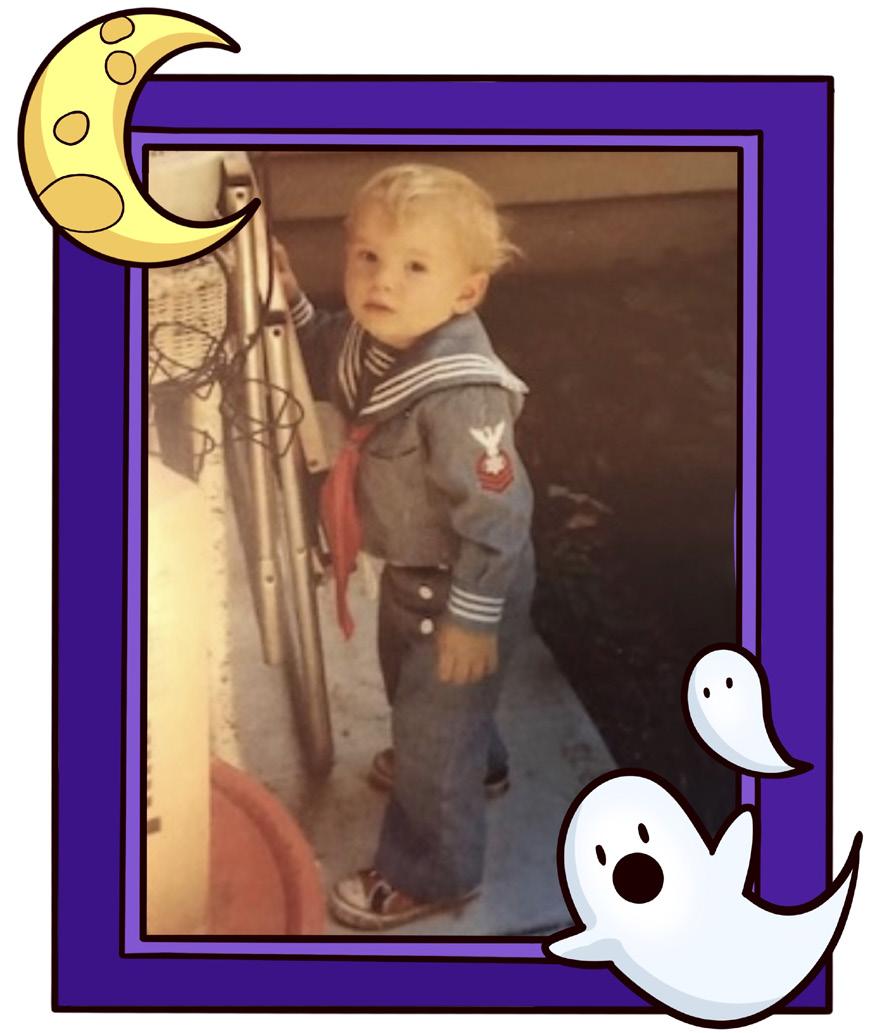
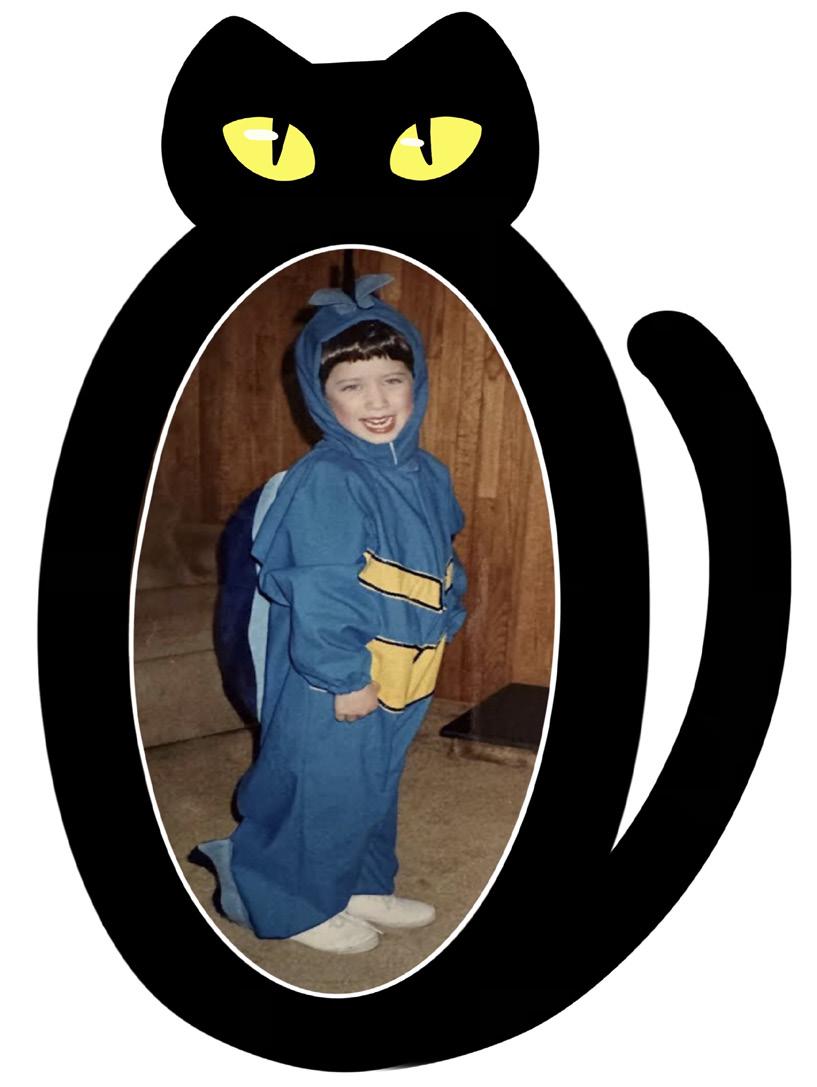


ioned trick-or-treating gives off. “My kids enjoyed trunk-or-treating a lot, but I don’t think they enjoyed it as much as trick-or-treating,” Wilson said. “They probably got more candy, but I think what they like about going to neighborhoods is that people put on big shows in their yard, so it’s more of an experience. I think if there were more activities, it would be more fun and memorable. I do remember they did trunk-or-treating at my last school; we never went to it, but they had more stuff like a haunted house, that kind of thing.”
It’s important to remember that the location is a huge aspect of the experience as well because each place runs their event differently.The type of relationship you have to the organizers or place matters.
“My first time trunk-or-treating was at my pre-school, Tutor Time” Vic Cunningham ‘24 said. “I think the location impacted the trunk-or-treating, mainly because it was a school, and it was exciting to be able to go around the school doing something fun as opposed to learning”.
There are a fair amount of places to go trunk-or-treating in Michigan as well; some require a drive that’s a little farther, but many people find it worth the trip..
Some places are “Trunk-or-Treat” at Fisherman’s Net Christian Church, “2023 Trunk or Treat” at Faith Baptist Church, and so many more.
Most people, similar to trick or treating, stop trunk or treating at a certain age. But the memories are forever remembered and recalled upon each Halloween.
“When I was in Pre-K, I dressed up as a fairy with pink little wings,” Cunningham said. “We did some festivities before, while the parents set up their cars, then we went out and I was walking with my cousin and I got so much candy. It was amazing.”
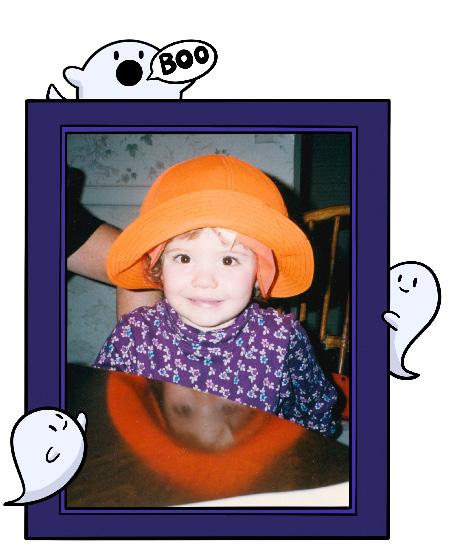




PAGE 4 PAGE 5 OCT. 31, 2023 OCT. 31, 2023
Graphic by Megan Peng ‘25
BELLA YOUNG ‘25
Graphics by Megan Peng ‘25
A. B. C. E. F. H. I. J. Answers: A. Eric Gajar B. Katie Kukulski C. Scott Benke D. Laurin Wolf E. John Lund F. Dylan Madden G. Lily Kadets H. Alyssa Friendly (on the left) I. Susan Beamish J. Brandon Groff Photos compiled by Eva Bernstein ‘25 and Dhruv Nallamothu ‘25 D. I. J.
Briefs compiled by Ella Song ‘25, images courtesy of Google
Meera Tewari ‘25 - Casper
“In 6th grade, I watched Casper, the ghost movie. I remember watching this movie and at first thinking it was a cartoon and would be an easy watch, but I ended up getting really scared by it. I then decided to not watch scary movies ever again.”
Photo courtesy of Ava Englesbe ‘24
KNOCK, KNOCK! Ava Englesbe ‘24 prepares to trick-or-treat with her sister, Mia Englesbe ‘22, in Ann Arbor Hills during the early 2010s. “We had just moved into this neighborhood,” Englesbe said. “It was our first time trick-or-treating there, and everyone was so welcoming.”
STITCHING DREAMS INTO REALITY Ruth Norton ‘26
‘25,
‘25
Poll
conducted by Izzy Baru
graphic by Megan Peng
Guess the teacher in the Halloween throwback photo

Inconsistent temps on campus cause frustration among students, faculty
MEGAN PENG ‘25 Design Staff
In recent weeks, the fluctuating weather has brought attention to the inconsistency of the indoor temperature on campus, and have left students stressing about the sudden bursts of heat and cold. The temperature of classrooms has also raised concerns about the productivity of students and faculty, as well as causing discomfort and affecting the learning environments.
“Most of the thermostats are set for about 70 degrees,”
“If set at 50 degrees, the temperature in that forum would go up, and automatically the heater would turn off, and because it’s so cold outside, that temperature could cool the room down again,” Geremia said. “But if it’s 70 degrees outside, and the heater is running, and 100 students come in and raise the temperature, the heater turns off right away, but it could take two hours before the temperature in that room comes back down.”
The transition from summer to fall has caused temperatures to rise and drop unexpectedly, which becomes a incon students who want to remain focused during the school day. “I’m very temperature sensitive, especially the heat, so I wish it was colder in other areas because it’s easier to solve being cold rather than being hot,” AJ Simon ‘25 said. If a place is too hot, it’s all I can focus on, but when a place is too cold, I can just leave a sweatshirt on.”
In addition, athletes who practice in the gyms also struggle with the hot temperatures. In order to increase air flow and stay cool, the fans must be turned on, and the doors leading to the outside of the gyms need to be propped open.
“When we have volleyball practice on really hot days, it’s really hard to focus, and running feels like tor ture because of how hot you get,” Allison Shamus ‘27 said.
Shamus has also expressed her frustration re garding the erratic temperatures in the freshman forum, and how the heat on campus has affected her productivity.
“When I’m in the 9th grade forum, I’m thinking more about the heat than what I’m actually trying to focus on; but if I was in the cooler forum, I wouldn’t be affected by [how cold it is],” Shamus said. “I wish it was a lot cooler in general. Especially in a classroom where it’s really hot or really cold, because I would be more focused on how cold or hot it is rather than my actual studies, and it gets really bad if I’m trying to focus because it can make me tired.”
Teachers have also voiced their concerns about the inconsistent temperatures on campus and their effects on the learning environment in classrooms, and how students struggle to stay focused in class.
in the heat. It’s easier to layer up in a cold classroom, so I’d rather my room be cold than hot. Some students might find it challenging when you’re overly cold or overly hot, which can make you unfocused.”
Izzy Collins ‘25 is one of the few students who find the temperatures in the school to be too chilly.
“The school is entirely too cold, I’m freezing all the time,” Collins said. “Sometimes, my hand gets so cold that I can’t write properly. But in the summer, the temperature is perfect. I think the best temperature for the school is around 75 degrees.” Since some are cooler than others, Shamus hopes that in the future, the temperatures will find a middle ground.
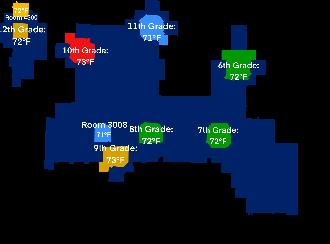
said. “I think [the classroom] is a nice, safe haven for students that are
see a lot of savings already.”
Construction routes to and from school yield higher traffic volume
IZZY BARU ‘25
School Editor
You missed your alarm! Now you only have twenty minutes to get up, get dressed, brush your teeth and get out of the house to make it to school. On top of that it is a race against time to beat the traffic generated by neighboring schools and secure a spot in the parking lot. This is the new routine of the average Greenhills kid.
Due to the combination of the Geddes Road to Greenhills project and the Greenhills Drive to US-23 project there has been an increase in traffic around Greenhills. The new single project is the entire length of Earhart Road. According to the city of Ann Arbor the main focus of the project is to improve broken down pavement and upgrade parts of the stormwater system. This requires Earhart to temporarily turn into a one way street. The benefits of this project will be the addition of three mini roundabouts to slow down cars, smoother pavement, new sidewalks, a stronger stormwater system, and the installation of bike lanes. While the construction will bring many safety benefits, some Greenhills families and faculty were distraught with the work starting so close to the beginning of the school year.
“This is the city’s construction so Greenhills did not have a say for when the work would begin, we were originally told it was starting right after this past school year ended,” chief financial officer John Nickel said. “However it never did and then we got notices that kept pushing the date further back.
rounding the addition of the shuttle bus. There was also a shift to the middle school after school sports schedule, to spread out pick up times middle schoolers now start during C&C time. During the first week of school Nickel got a lot of feedback from parents surrounding the construction. Thus Nickel and director of operations Ken Geremia flew a drone over the campus to find the most prominent “choke point.” Choke points are areas where the traffic is creating the largest problem and slowing down drivers. The biggest choke point was on Greenhills drive exiting onto Earhart northbound. They alerted the city of their findings and got a temporary stop sign installed to allow for better flow of traffic. Members of Greenhills administration have been posted in the middle school parking lot helping to make sure traffic flows smoothly.
Brian Magnus ‘27 hasn’t noticed much of a change in his schedule before school but has noticed the change when he leaves school. Magnus rides with his brother to school but gets picked up or takes the shuttle to get home. Magnus’ schedule has only been affected once by the shuttle.
“One time a student said he was supposed to be on the shuttle but then he ended up getting picked up by his parents,” Magnus said. “But one of his friends on the shuttle said he was missing and we had to turn around and go all the way back to Greenhills, that day I didn’t get home until 4:30 p.m. and then I had to rush to swim practice at 5 p.m.”
The idea of the shuttle bus was mentioned in an administrator meeting last Spring. Geremia reached out to numerous
ities. The system is currently not run by Greenhills but by the bus company and the drivers. However Geremias’ end goal is to make it a total Greenhills entity.
“If it continues, our hope would be that we could use one of our vehicles and run multiple shifts after school dismissal from 3:30 to 4:30,” Geremia said. “It would make as many loops as it can to the commuter lot during that time.”
While a number of students take the shuttle a majority of the high school students do not. Drivers like Nicole Zhong ‘24 have felt a large change to their schedules. Zhong lives in Northville which means before the construction it would take her 25 minutes to get to school. However the new traffic delays have been unpredictable causing her to leave 50 minutes early to get to school on time. When it is time to leave school she hustles to beat the combination of both Greenhills and surrounding schools after school traffic.
“It definitely is a change from last year when I always knew I would arrive by 8:10 a.m everyday,” Zhong said. “Even when I leave my house early I still get stuck in the traffic and it is so annoying to keep making loops through both parking lots and then have to park on the street.”

Greenhills has been doing their best to main tain traffic flow she has some sug gestions for making the drop off process smoother on the middle school side of the school.
the traffic issue they
could require middle school parents to drop off their kids earlier, or have a cutoff time and then have a different time slot for highschoolers,” Zhong said.

director of op rooms are be set rooms Alschool best to keep the students comfortable, there are still tant chang temperatures classrooms flowing in
OCT. 31, 2023 PAGE 6
Peng ‘25
Graphic by Megan
Graphic by Arya Prabhakar ‘26
Graphic by Megan Peng ‘25

Junior builds greenhouse on campus
JAYRAMAN ‘26
MIRA
School Staff
Many Greenhills students rely on the several service pathways to complete their service requirements - Jacob Perkins ‘25 had a different approach. Over the last year, Perkins has put his time and effort into constructing a greenhouse as a crucial component of his Eagle Scout project, demonstrating his passion for the environment and gardening. This greenhouse is located outside of the 11th grade forum.
Perkins started this project at the beginning of his sophomore year. His vision for the greenhouse extends far beyond personal satisfaction.
“My main goal is to have the greenhouse available as a resource for Greenhills, for any kids who want to garden recreationally,” Perkins said.
One of the driving forces Perkins chose to take on this project is to restore the existing, damaged greenhouse.
The greenhouse that was there before was made of wood, and over time, the wood started to rot. Additionally, Perkins has been a devoted member of the Greenhills gardening club throughout high school, and a greenhouse would benefit the club greatly.
Perkins has worked hard to lead the construction of the greenhouse himself.
an inspiring example for his peers and the wider Greenhills community.
Science department chair Catherine Renaud has been overseeing Perkins’ project and forming her own visions for the greenhouse.
“We could germinate seeds ahead of time using this greenhouse, maybe planting flowers with the service department,” Renaud said. “The middle schoolers and upper schoolers could use it during free time.”
Renaud believed that the greenhouse comes with many opportunities for students and the school community.
“The science department will definitely use the greenhouse,” Renaud said. “We can utilize it and open it up to the general faculty and the classes.”

“The first step was fundraising,”Perkins said. “It came from a mix of donations from the school and sending email requests. After fundraising, we bought the greenhouse and the materials we needed.”
While the building process had gone by well, it had not been without its share of challenges along the way.
“The most challenging part has been the logistics,” Perkins said. “It’s a large-scale construction project, which means I have to plan out all the steps and organize everything.
Along with wanting to benefit the Greenhills community with the greenhouse, Perkins had an additional motivation for its construction.
“I’ve been a Scout for nine years now,” Perkins said. “Being an Eagle Scout consists of doing leadership in your troop, and doing a service project led by yourself and your community.
An Eagle Scout is the highest rank in the Boy Scouts of America program. Perkins’ pursuit of this honor through the greenhouse project not only reflects his personal commitment but also sets
Renaud is not only excited for the science community at Greenhills to benefit from this greenhouse, but she is grateful for the work Perkins has done.
“I love the greenhouse,” Renaud said.
“Jacob is so invested in it and he is giving back to the community. He could do anything for his Eagle Scout project but he’s doing something to benefit the school. I admire Jacob for thoughtfully doing something he is passionate about.”
Perkins has had a great deal of support while accomplishing this project, a large amount from his parents. Lauren Oshman, Perkins’ mother, felt a sense of pride regarding Perkins’ achievement.
“It was exciting when he proposed the idea of the greenhouse,” Oshman said. “I was excited that he had his own idea. It was different than other Eagle Scout projects, and I liked that it was something that other people could enjoy.”
Oshmnan had many remarks about the strenuous but satisfactory process.
“Jacob has been supported through the whole project, but he has done all the groundwork himself,” Oshman said. “Jacob’s vision was very clear. From asking permission from the school to doing fundraising, along with all the planning and budgeting. The whole organizational effort and fundraising was months and months of effort, and it was all Jacob.”
Perkins is a determined and focused person, which is said by everybody who has supported him throughout his Eagle Scout project journey.
“Jacob is someone that if he sets his mind to something, he’ll do it,” Oshman said. “That’s what he did with the greenhouse.”
ChatGPT turns 1: school explores impact of AI
NEHA NARAYANAN ‘26
School Staff
NATALIE HONG ‘27
Lifestyle Staff
Artificial Intelligence (AI), a rapidly emerging technology, is reshaping today’s work landscape and continues to cast a shadow of uncertainty over its future potential. Nearly a year ago, Chat GPT was released. Almost six months later, Snapchat My AI, Claude, and Google Bard emerged. With AI technologies becoming prevalent in online applications, the impact of generative AI is evolving. Now, students are facing the challenge of retaining integrity and honesty in schoolwork while the temptation of AI looms. Teachers are starting to delve into changing their curriculum, teaching style, and policies in order to adapt to this new era.
“By not taking part in AI, we also are seeing industries change, the workforce changing, and they’re starting to utilize these tools,” Green said. “So if we don’t start changing how we do things even at the educational levels, I think it does a disservice to how students are going to eventually integrate into those workspaces because they’ll be starting to use some of these shortcuts.” In this new educational landscape, teachers are evolving alongside their students. Incorporating generative AI in their lesson plans, and revising their curriculums are all necessary in this new age of technology. For instance, students in Elizabeth Wilson’s art photography class have already begun to grasp how using AI for image creation and other Adobe products can help them create spooky Halloween photos for AI-generated self-portraits. Applying the AI tool in Adobe, students learned how to generate new images in place of a subject to enhance their images.
Sparking a fire
Author
Angeline Boulley
visits school
MIRA JAYRAMAN ‘26
School Staff
Over 1 million copies of Angeline Bouley’s book, “Firekeeper’s Daughter”, have been sold since it was released in 2021. Students and faculty members had the op portunity on Oct. 9 to listen in and talk to Boulley about her point of view and the writing process of the book. Angeline Boulley is an indigenous person from St. Marie, Michigan. One of the two books Boulley has published, Firekeepers Daughter, was an instant #1 New York Times bestseller, staying on the list for 14 weeks. The novel is being adapted into a television series on Netflix by Barack and Michelle Obama’s production company, Higher Ground.
Boulley’s visit sparked an interest in many students and faculty, including Librarian Stefanie Halliday. “Greenhills is such a diverse community, so it is very important for us to hear as many voices as we can,” Halliday said. “Having Angeline come here really resonated with us and our community. Indigenous voices are very under-represented points of views and we don’t get to hear from them often, so Angeline’s visit was a good opportunity to evaluate our book collection for native voices. Buying books with diverse voices is a primary importance to me here in the library.”
Boulley not only shared her own stories of growing up as an indigenous person and finding her passion for writing, but she also inspired young students to do the same.
“We had a sixth-grade and eighthgrade class come to a session hosted by Angeline here in the library,” Halliday said. “The students were able to ask a variety of questions about her writing process, and Angeline really valued their opinion and shared great ideas.”

ing AI in some way, whether by having it write essays, answer math problems, or translate entire paragraphs into a foreign language.
“I really only use AI to help with my Spanish and math homework
even though I know it’s bad, it just makes Spanish especially so much easier. Sometimes I just don’t have the energy to write an entire paper,” a freshman said. “Especially since I know I could do the work if I wanted to, I don’t feel bad about using AI. Ultimately, I’m just using my resources.”
This is an internal crisis that many students, not only at Greenhills, are facing. Most know it’s wrong and is cheating, but by rationalizing their use of AI, most can evade the guilt. Not only is AI affecting its student users, but also other students who act as bystanders.
“I haven’t [used AI], but I’ve been around when other people are doing their schoolwork and I’ve seen them using Chat GPT. It makes me want to tattle, but I won’t because I don’t want to be that guy,” a freshman said.
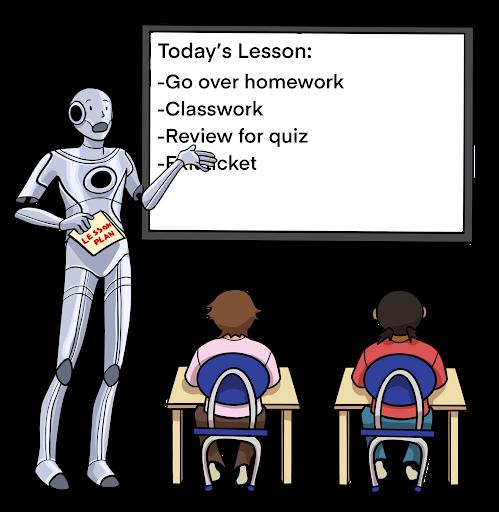
“Whatever path students take, AI is going to be part of it,” Director of Teaching and Learning Jenna Goldenberg said. “I think we need to be focused on how we are supporting students in learning the skills that they need to use it effectively, as well as engaging them in discussions about what it means to use AI ethically. Specifically in ways that support their growth and their work, and doesn’t supplement it.”
Back in 2020, if high school students were asked if they had ever cheated on schoolwork using AI, most people would probably say no. Some might not even understand what exactly AI is. Now, just three years later, when some Greenhills students were polled, over forty percent said that they have cheated on schoolwork us-
Although there are methods for detecting AI writing, students are very resourceful when it comes to masking their use. People now take their AI-written essays and run them through “rephrasing” generators, which reword the essays using synonyms to mask their computerized essence. These issues aren’t going away anytime soon, so students will continue to have to choose between remaining sincere or relying on the aid of AI.
The technology and education team of teachers and staff place a strong emphasis on and stress the importance of transparency. Openness, honesty, and proper source citation are essential when utilizing AI for school work.
Students are encouraged to be clear about how they’re using these tools and remember that AI should help improve their work rather than replace their own efforts.
“I would hope for the future that students are utilizing AI like any other tool. AI is limited, it’s biased, and it does not always provide accurate info, so that’s something for students just to be aware of but then also to explore the capabilities and the possibilities for learning or for growing their knowledge,” Spanish teacher Ellen Gwozdek said.
Similar to Gwozdek, the Upper School Dean of Students, Janelle Sterling, thinks that AI can be used both positively and negatively in the school work environment. “I think it [AI] is kind of cool in the sense that anything is possible. I think that being able to use AI constructively to help you can be a time saver. My hope would be that we figure out how to use it [AI] advantageously and that we don’t lose some of our ability to think creatively as a result of leaning on it too much.”
Associate Head of School Quincy McLaughlin saw the benefits of Boulley’s visit on students as well.
“We are incredibly lucky that we get to host talented writers, especially those like Angeline who amplify a population that doesn’t typically see itself reflected in literature, and that is an important part of what we strive for at Greenhills,” McLaughlin said. “She is a great example of perseverance and hard work for the students.”
Getting a renowned and bestselling author like Boulley to come to speak to students and faculty wasn’t an easy task for English Teacher Becky Randolph. Randolph is the director of the McDowell Writing Program, a writing competition that all students can participate in. It also involves having different artists come and speak about their work.
“As the director of the Mcdowell Writing Program, I am always thinking about who would be good to have come in to be a visiting writer,” Randolph said. “I was driving home from school in May, and I heard her interview on NPR. Her novel and her personality sounded very interesting, but also, she is local to Michigan and an indigenous person. I realized she was gaining a lot of attention and I wanted her to come speak as a visiting writer.” Randolph recognized the impact that Boulley could make on students, and how having new voices and perspectives speak to students emphasizes the importance of diversity even more.
“One of our many goals at Greenhills is to include diversity and different voices, and reading the stories of people from other cultures that enhances that mission. We were very fortunate to have Angeline at our school.”
Looking forward, Randolph hopes to have more artists from different backgrounds come and share their stories with the students and faculty.

OCT. 31, 2023 PAGE 7
LAYING THE GROUNDWORK As part of his Eagle scout project, Jacob Perkins ‘25 works on the construction to get the greenhouse he planned up and running after months of work.
EMPOWERING THRU_ STORYTELLING Angeline Boulley inspires students with her book, “Firekeeper’s Daughter”. “She was really good at talking to students and motivating them,” said Becky Randolph. “We are incredibly fortunate to have Angeline come to our school.”
Graphic by Megan Peng ‘25
Photo by Mira Jayraman ‘26

A loud silence
693 students in the school and none in the stands, there is a missing student section
DOMINIC SCHUSTER ‘24
Sports Editor
Once a year there is one game that attracts more upper school students than any other: The Spir it Week Game. Students fill the bleachers to show out to the basketball teams games. However, it is this one game that they show out to. Not others, so that begs the question: where is our student section?
each game. Many issues collide with this but there are three that stand out according to Ward and Rehman: practices/away games, homework, and where

With suggestions like no homework days that would allow for more attendance at home events, for Ward, the idea behind getting more people to games is looking bright. Homework is not the only issue,

Facing this question head on is Athletic Di rector Tom Ward and Student Council President Ji breel Rehman ‘24. Ward has thought of many ideas, collaborating with Rehman, as to how we can get our student section out in more numbers.
“We are trying to increase the student experi ence at games,” said Ward. “I want it to be fun, to go to a Greenhills athletic contest.”

Jibran Ali ‘24 is known for bringing fun to the games in the form of our student section. “It shows how amazing sports events could be and that’s just with one person, if more people come in and get hyped then it’s fun for the fans and the play ers.” said Ali.

Rehman has also provided many ideas along side Ward and Ali to figure out how to make these games more fun/accessible.

“We plan to make more games worth spirit week points,” said Rehman. “It’s a working progress right now.”

Ward had similar ideas as they implement ed spirit week points into the Homecoming Games along with finding the name for the student section. With these ideas there still remains the issue, why can’t a certain number of students make it to
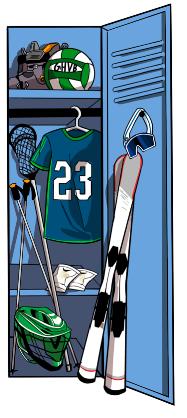
rather other sporting events as well.
“It’s not just homework and not just a ‘I don’t want to come’ but rather a real logistical issue around peoples schedules,” said Ward.
Tackling this logistical issue is a lot harder than it might seem. The main factor, according to Ward, that is helping push it is the delaying of games later in the day, however, the issue of sunlight comes into play.
“We moved a varsity soccer game (the homecoming game against FGR) back to not conflict with practices” said Ward.
This game is the only varsity match that will begin this late this fall, as without light the game cannot continue. The solution to this would be lights, but this solution at the current moment is an impossible climb.
“Getting lights is something that is very challenging, I wouldn’t even say it is in the plans.” This is because of the Earhart Village condominiums, who would have to approve of the light installation at the school.
Without this option, the athletic department is being strained right now as they continue to perilously fight to garner more attendance at athletic events.
With new personnel in the Athletic office, they have many ideas that they will push, and as the year continues the department is putting their foot forward on bringing more people to games.
“I want it to be fun for a random person who may or may not be involved to come out and have fun with their friends and watch the game,” said Ward.
New varsity sports; dreams or reality?
Despite student calls for new sports, obstacles remain
MATT STRIECHER ‘24
Lead Sports Reporter
Every year, a “sports interest” survey is sent to every student in the upper school, which is a list of every sport offered for the upper school along with some prospective sports as well as a question box where interest in any sport is indicated. In recent years, though, there has been increasing interest in new sports, like boys volleyball, girls lacrosse, and even a coed alpine ski team. These have been the center of conversation for years now, and with the changing of the guard at the athletic director, doubt is growing about the prospect of ever getting these new teams.
At the head of the efforts is new athletic director Tom Ward, who replaced the recently retired Meg Seng. He is the lynchpin for the process of adding any new teams. “Every year, we send out our survey and as per interest level, we decide whether we offer that MHSAA sport or not,” said Ward. “We’re always looking at the numbers and we’re always trying to offer what we can sustain.”
There are many things that need to go into creating a new athletic program, and without them, a team simply won’t get off the ground.
“[New sports] are as high of a priority as the interest survey shows. As we get closer to winter and the change of sports, we will push the survey a bit more,” said Ward. “It depends on numbers and the kind of interest students have.”
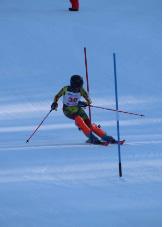
“There is a process we have to go through, like making sure we have sustainable numbers, coaching facilities, and the financial means to support [a new program],” said Ward.
Another sport that has exploded in the MHSAA is boys volleyball, which has also pulled a notable amount of interest from all grades.
“Boys volleyball is growing super fast, so the expectation is that there will be enough boys volleyball programs in Michigan for it to be an MHSAA sponsored sport maybe as soon as next year.” said Ward. “We wouldn’t be able to offer it this spring, but kind of like girls lacrosse, if we see interest, it could be possible in the next few years.”
Nate Gajar ‘24 had interest in boys volleyball when the first notion of adding it came into consideration. He has maintained interest ever since, even into the beginning of his senior year.
“I can’t say that I’m satisfied. If the athletic department told me they had made some progress, I would be happy, but that just hasn’t happened,” said Gajar. “I know that across all four grades there would be enough interest for a team to form.”
Ward’s plan for communicating with the students about what sports are wanted is to take what the students say on the annual sports survey and use it to determine priority of adding new teams.
An alpine ski team was also included on the most recent surveys, but it will prove to be the most challenging sport to try adding. “Skiing is a whole different ball game,” said Ward. “The worry is that some people may sign up thinking ‘Oh, I might like this’ but have never skied before. Part of the application is having a really good understanding of the numbers so that we can sustain it, and we don’t want to have a program that lasts one year.” Part of the movement to add skiing is John Sadrack ‘24, who skis as a member of the XLR8 Alpine Race Team, an independent organization. “I was making progress with Meg, but the switch has made it kind of hard,” said Sadrack. “If we don’t get a team here, I would really like to partner with another school, like FGR or one of the public schools,” said Sadrack. The biggest issue with getting an alpine ski team is costliness. Ski racing requires a minimum of 14 different pieces of equipment, some of which cost up to 1,100 dollars, like a set of skis, and renting costs 250 dollars on average only for skis and poles. The athletic department also has to rent a hill for a season, which costs upwards of 5,000 dollars, fund trips to race events to hills up north, and pay coaches. The combined cost for one ski season would be upwards of 100,000, between parents and the athletic department, and could end up costing more depending on weather and team size. This aside, Sadrack still knows there are great reasons for joining a team.
“I think we have a group that would want to join (the team), it’s a lot of fun to go skiing and riding up the chairlift with your friends,” said Sadrack. “I think the issue is the expensive part of skiing. You have to buy skis, a jacket, and find a place to ski. It’s an environment based sport,” said Sadrack. Even though these sports have not made much progress, the athletic department remains focused on the students’ suggestions. These new programs could become part of the 20 varsity sports already offered in the near future, but that is up to the students.
“When we add a new sport, it has to fit our mission which is ensuring that students are involved in different parts of our community,” said Ward. “As long as the sport allows us to meet those goals, which I think these sports do, they are a possibility [to begin thinking about]”
PAGE 8 OCT. 31, 2023
SLAMMING STICKS John Sadrack ‘26 racing through slalom gates at Mount Brighton Ski resort. “Skiing after a long day of school work is an amazing feeling,” Sadrack said.
Photo courtesy of John Sadarack ‘26
ONE STUDENT IN THE STANDS Parents packed the stands for Greenhills High School soccer with only one student fan: middle schooler Arrio Atienza ‘30, pictured center. Photo courtesy of Dominic Schuster ‘24









 THOMAS STOFFEL ‘25
THOMAS STOFFEL ‘25
























































